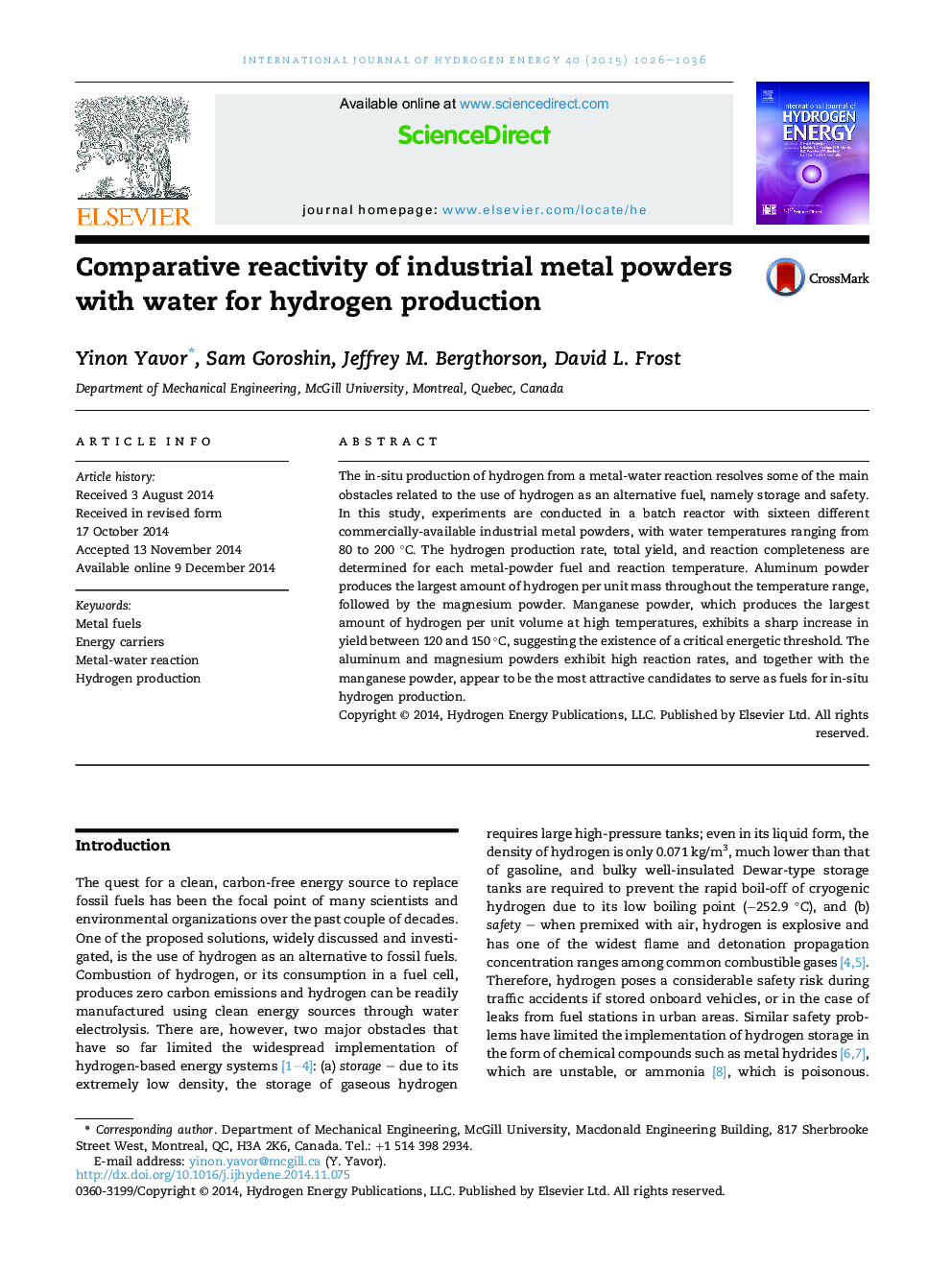| Article ID | Journal | Published Year | Pages | File Type |
|---|---|---|---|---|
| 1270198 | International Journal of Hydrogen Energy | 2015 | 11 Pages |
•Metal-water reaction is studied for 16 different industrial metal powders.•Hydrogen flow rate and yield are measured over the temperature range of 80–200 °C.•The highest H2 flow rate and yield per mass are noted for Al and Mg powders.•The Mn powder produces the largest amount of H2 per volume at 150–200 °C.•A sharp increase in yield is noted for the Mn powder between 120 °C and 150 °C.
The in-situ production of hydrogen from a metal-water reaction resolves some of the main obstacles related to the use of hydrogen as an alternative fuel, namely storage and safety. In this study, experiments are conducted in a batch reactor with sixteen different commercially-available industrial metal powders, with water temperatures ranging from 80 to 200 °C. The hydrogen production rate, total yield, and reaction completeness are determined for each metal-powder fuel and reaction temperature. Aluminum powder produces the largest amount of hydrogen per unit mass throughout the temperature range, followed by the magnesium powder. Manganese powder, which produces the largest amount of hydrogen per unit volume at high temperatures, exhibits a sharp increase in yield between 120 and 150 °C, suggesting the existence of a critical energetic threshold. The aluminum and magnesium powders exhibit high reaction rates, and together with the manganese powder, appear to be the most attractive candidates to serve as fuels for in-situ hydrogen production.
